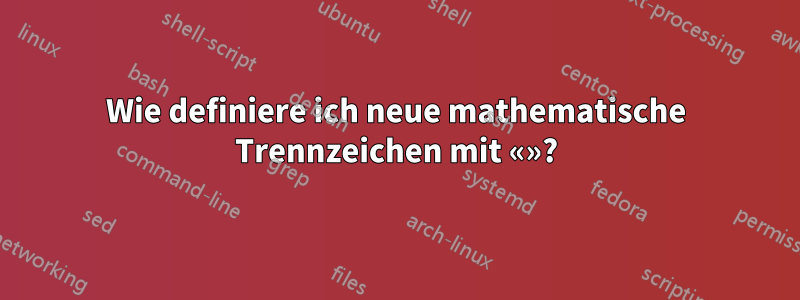
Ich möchte spezielle mathematische Klammern mit den Symbolen «» (französische Lummen) verwenden. Das Problem besteht jedoch darin, dass sie, wenn ich sie mit \mboxoder definiere \text, mit dem umgebenden Text kursiv dargestellt werden.
\documentclass[12pt,a4paper]{letter}
\usepackage[T1]{fontenc}
\usepackage{amsmath}
\begin{document}
\newcommand{\fopen}{\mathopen\text{\guillemotleft}}
\newcommand{\fclose}{\mathclose\text{\guillemotright}}
\newcommand{\ff}[1]{\fopen #1\fclose}
\textbf{What I have}
With normal text $\ff{O:P:Q}$
{\itshape With text in italic $\ff{O:P:Q}$ } (guillemots in italic)
\textbf{What it should be}
With normal text $\ff{O:P:Q}$
{\itshape With text in italic} $\ff{O:P:Q}$
\end{document}
Antwort1
Es wird die Schriftart verwendet \text, die beim Starten der mathematischen Formel gültig war, daher wird sie im kursiven Kontext kursiv dargestellt.
Verwenden Sie \textnormalstattdessen:
\newcommand{\fopen}{\mathopen{\textnormal{\guillemotleft}}}
\newcommand{\fclose}{\mathclose{\textnormal{\guillemotright}}}
Beachten Sie auch die zusätzlichen Klammern. Nur aufgrund der Implementierung erhalten Sie keine Fehlermeldung. Im folgenden Beispiel füge ich auch eine Möglichkeit hinzu, damit die Befehle dies berücksichtigen \boldmath.
\documentclass[12pt,a4paper]{letter}
\usepackage[T1]{fontenc}
\usepackage{amsmath}
\usepackage{pdftexcmds}
\makeatletter
\newcommand{\normalorbold}{%
\ifnum\pdf@strcmp{\math@version}{bold}=\z@\bfseries\fi
}
\makeatother
\newcommand{\fopen}{\mathopen{\textnormal{\normalorbold\guillemotleft}}}
\newcommand{\fclose}{\mathclose{\textnormal{\normalorbold\guillemotright}}}
\newcommand{\ff}[1]{\fopen #1\fclose}
\begin{document}
\textbf{What I have}
With normal text $\ff{O:P:Q}$
{\itshape With text in italic $\ff{O:P:Q}$}
\textbf{What it should be}
With normal text $\ff{O:P:Q}$
{\itshape With text in italic} $\ff{O:P:Q}$
{\boldmath $\ff{O:P:Q}$}
\end{document}
Wenn Sie keinen Mangel an Symbolschriftarten haben, können Sie eine definieren:
\documentclass[12pt,a4paper]{letter}
\usepackage[T1]{fontenc}
\usepackage{amsmath}
\DeclareSymbolFont{supplsymbols}{T1}{\familydefault}{m}{n}
\SetSymbolFont{supplsymbols}{bold}{T1}{\familydefault}{bx}{n}
\DeclareMathSymbol{\fopen}{\mathopen}{supplsymbols}{19}
\DeclareMathSymbol{\fclose}{\mathclose}{supplsymbols}{20}
\newcommand{\ff}[1]{\fopen #1\fclose}
\begin{document}
\textbf{What I have}
With normal text $\ff{O:P:Q}$
{\itshape With text in italic $\ff{O:P:Q}$}
\textbf{What it should be}
With normal text $\ff{O:P:Q}$
{\itshape With text in italic} $\ff{O:P:Q}$
{\boldmath $\ff{O:P:Q}$}
\end{document}




